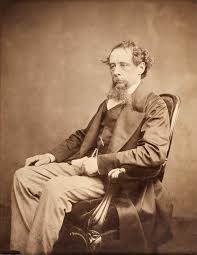The best-loved of Britain’s novelists, Charles Dickens, shared a tale that transformed the season of goodwill and Christmas traditions.
“A Christmas Carol” by Charles Dickens is one of the most iconic and heartwarming Christmas plays of all time. It shares the story about a mean-spirited and selfish old man, Ebenezer Scrooge, who hates Christmas. He is then visited by his old business partner Jacob Marley and three ghosts who take him on a journey through his past, present, and future in the hope of transforming his bitterness.
It was released during the Christmas season of 1843. It had a high production cost and low selling price, it did not generate a lot of profit in the initial stages but it was an immediate success.

At the beginning of the Victorian period, the celebration of Christmas was in decline. The medieval Christmas traditions, which celebrated the birth of Christ, the ancient Roman festival of Saturnalia and the Germanic winter festival of Yule, had come under intense scrutiny by the Puritans under Oliver Cromwell. The Industrial Revolution, in full swing in Dicken’s time, allowed workers little time for the celebration of Christmas.
The new urban population of Britain didn’t have much energy or opportunity to celebrate Christmas, thanks to the extremely un-festive combination of long hours of unregulated industrial toil and displacement from the rural communities they’d grown up in. Many of our ideas about what makes a merry Christmas (including the phrase itself) were first seen in Dickens story. Dickens placed charity at the heart of the season and made us hope for snow.
The Christmas stories of Dickens, particularly his 1843 masterpiece A Christmas Carol, rekindled the joy of Christmas in Britain and America. A Christmas Carol continues to be relevant, sending a message that cuts through the materialistic trappings of the season and gets to the heart and soul of the holidays.
When Charles Dickens passed away in 1870, a young girl in London asked a question that demonstrated just how strongly Dickens’s writings were associated with the festive celebrations. She asked, “Mr. Dickens dead? Then will Father Christmas die, too?”
It made a permanent mark on how Christmas is viewed and celebrated in modern times. You could say that every aspect of the festive season – turkeys, mince pies, mistletoe, present giving, and overall merriment – was down to Dickens’s portrayal of Scrooge’s spiritual transformation.
Dickens shifted the focus from one of the community-based activities to be much more family-centred and equal. The welfare of children and the welfare of the poor were an issue close to his heart, which can be seen in The Christmas Carol where he popularised the idea of the “spirit of Christmas” and the need for generosity throughout the year, rather than just one day.
The vocabulary used in the play has crept into today’s conversations, with “Scrooge” being someone who refuses to get into the holiday spirit, 176 years later.
A Christmas Carol delivered just the right message to bring families back to a holiday that often becomes a celebration of wealth and consumerism. Charles Dickens reminded his readers that a joyful Christmas morning does not require money or wealth, but heart, love, and family.
Charles Dickens did not create Christmas, but he influenced the spirit of Christmas we know today!

